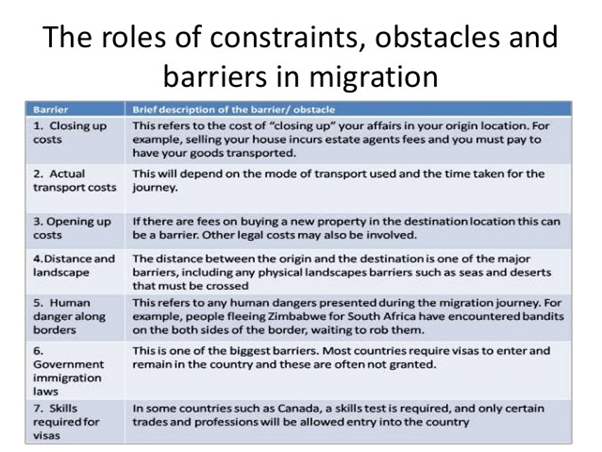UPSC Exam > UPSC Notes > Geography for UPSC CSE > Human Geography: Migration
Human Geography: Migration | Geography for UPSC CSE PDF Download
Human Geography- Migration
- Migration has been a very important factor in redistributing population over time and space.
- India has witnessed waves of migrants coming from Central and West Asia and also from Southeast Asia.
- Similarly, large numbers of Indians to have been migrating to places in search of better opportunities.
- Migration was recorded beginning from the first Census of India conducted in 1881.
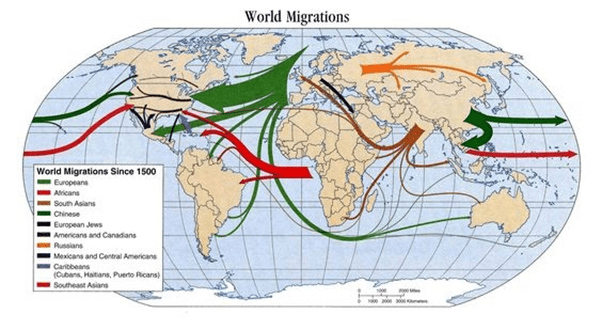
- This data was recorded on the basis of place of birth.
- However, the first major modification was introduced in the 1961 Census by bringing in two additional components viz; place of birth i.e. village or town and duration of residence (if born elsewhere).
- Further in 1971, additional information on place of last residence and duration of stay at the place of enumeration were incorporated.
- As per the 2001 census, out of 1,029 million people in the country, 307 million (30 per cent) were reported as migrants by place of birth.
- However, this figure was 315 million (31 per cent) in the case of place of the last residence.
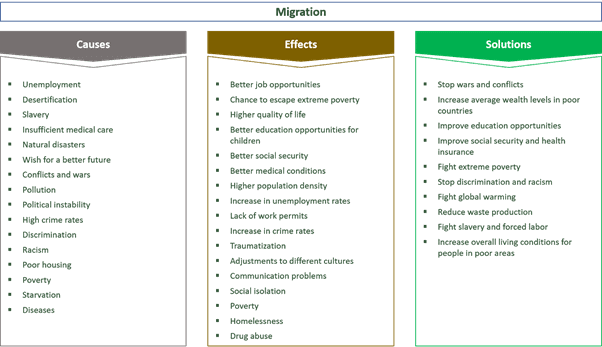
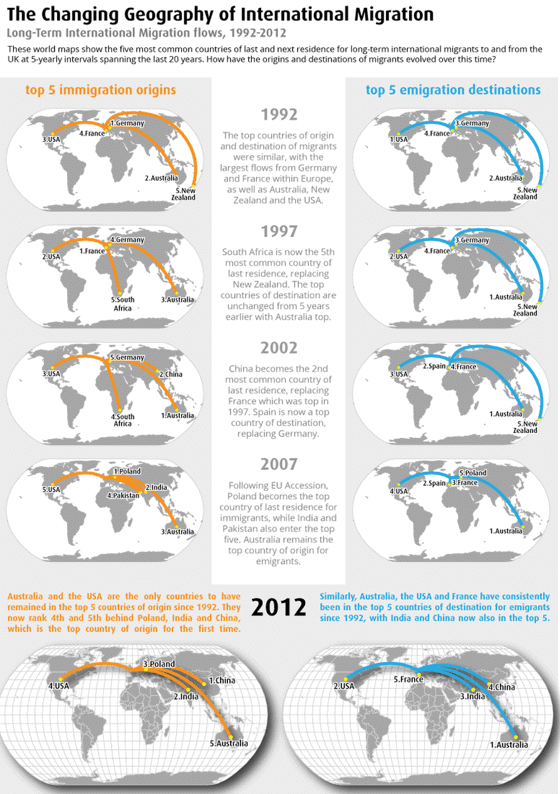
Streams of Migration
- A few facts pertaining to internal migration (within the country) and international migration (out of the country and into the country from other countries) are presented here.
- It is clearly evident that females predominate the streams of short distance rural to rural migration in both types of migration.
- Contrary to this, men predominate the rural to an urban stream of inter-state migration due to economic reasons.
- Apart from these streams of internal migration, India also experiences immigration from and emigration to the neighbouring countries.
- Census 2001 has recorded that more than 5 million people have migrated to India from other countries.
- Out of these, 96 per cent came from the neighbouring countries: Bangladesh (3.0 million) followed by Pakistan (0.9 million) and Nepal (0.5 million).
- Included in this are 0.16 million refugees from Tibet, Sri Lanka, Bangladesh, Pakistan, Afghanistan, Iran, and Myanmar.
- As far as emigration from India is concerned it is estimated that there are around 20 million people of Indian Diaspora, spread across 110 countries.
Indian Diaspora
During the colonial period millions of Indians were sent as indentured labourers to work on plantations in tropical countries.
- The British set people from Bihar and Uttar Pradesh to Mauritius, Caribbean islands (Trinidad, Tobago and Guyana), Fiji and South Africa.
- The French and the Dutch sent Indians to Reunion Island, Guadeloupe, Martinique and Surinam.
- The Portuguese sent people from Goa, Daman & Diu to Angola and Mozambique.
- All such migrations were covered under the time-bound contract known as Girmit Act (Indian Emigration Act).
- However, the living conditions of these indentured labourers were not better than the slaves.
- There was a steady outflow of India’s semi-skilled and skilled labour in the wake of the oil boom in West Asia in the 1970s.
- There was also some outflow of entrepreneurs, storeowners, professionals, businessmen to Western Countries.
- Third wave, of migrant, was comprised professionals like doctors, engineers (1960s onwards), software engineers, management consultants, financial experts, media persons (1980s onwards), and others migrated to countries such as the USA, Canada, UK, Australia, New Zealand and Germany, etc.
Spatial Variation in Migration
Some states like Maharashtra, Delhi, Gujarat and Haryana attract migrants from other states such as Uttar Pradesh, Bihar, etc.
- Maharashtra occupied first place in the list with 2.3 million net in-migrants, followed by Delhi, Gujarat and Haryana.
- On the other hand, Uttar Pradesh (-2.6 million) and Bihar (-1.7 million) were the states, which had the largest number of net outmigrants from the state.
- Among the urban agglomeration (UA), Greater Mumbai received a higher number of migrants.
Causes of Migration
These reasons can be put into two broad categories:
1. push factor, these cause people to leave their place of residence or origin; and
2. pull factors, which attract people from different places.

- In India people migrate from rural to urban areas mainly due to poverty, high population pressure on the land, lack of basic infrastructural facilities like health care, education, etc.
- Apart from these factors, natural disasters such as flood, drought, cyclonic storms, earthquake, tsunami, wars and local conflicts also give an extra push to migrate.
- On the other hand, there are pull factors that attract people from rural areas to cities.
- The most important pull factor for the majority of the rural migrants to urban areas is the better opportunities, availability of regular work and relatively higher wages.
- Better opportunities for education, better health facilities and sources of entertainment, etc. are also quite important pull factors.
- On the basis of the figures, it can be seen that reason for the migration of males and females are different.
- For example, work and employment have remained the main cause for male migration (38 per cent) while it is only three per cent for females. Image shows the causes of International Migration- Contrary to this, about 65 per cent of females move out from their parental houses following their marriage.
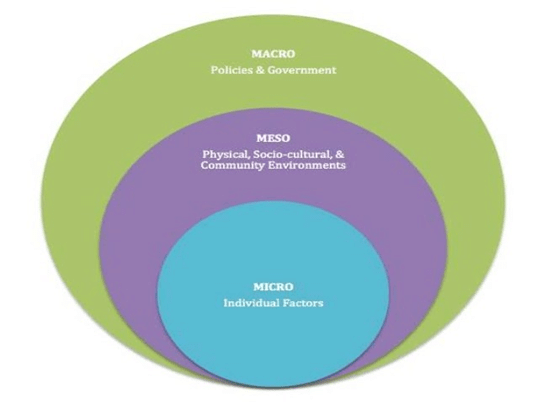
- This is the most important cause in the rural areas of India except in Meghalaya where the reverse is the case.
- In comparison to these, marriage migration of the male is only 2 per cent in the country.

Consequences of Migration
Migration is a response to the uneven distribution of opportunities over space.
- Consequences can be observed in economic, social, cultural, political and demographic terms
Economic Consequences
- A major benefit for the source region is the remittance sent by migrants.
- Remittances from international migrants are one of the major sources of foreign exchange.
- In 2002, India received US$ 11 billion as remittances from international migrants.
- Punjab, Kerala and Tamil Nadu receive a very significant amount from their international migrants.
- The amount of remittances sent by the internal migrants is very meagre as compared to international migrants, but it plays an important role in the growth of the economy of the source area.
- For thousands of the poor villages of Bihar, Uttar Pradesh, Odisha, Andhra Pradesh, Himachal Pradesh, etc. remittance works as lifeblood for their economy.
- Migration from rural areas of Eastern Uttar Pradesh, Bihar, Madhya Pradesh and Odisha to the rural areas of Punjab, Haryana, Western Uttar Pradesh accounted for the success of their green revolution strategy for agricultural development.
- Besides this, unregulated migration to the metropolitan cities of India has caused overcrowding.
- Development of slums in industrially developed states such as Maharashtra, Gujarat, Karnataka, Tamil Nadu and Delhi is a negative consequence of unregulated migration within the country. Demographic Consequences.
- Migration leads to the redistribution of the population within a country.
- Rural-urban migration is one of the important factors contributing to the population growth of cities.
- Age and skill selective out-migration from the rural area has an adverse effect on the rural demographic structure.
- High out-migration from Uttarakhand, Rajasthan, Madhya Pradesh and Eastern Maharashtra have brought serious imbalances in age and sex composition in these states.
- Similar imbalances are also brought in the recipient’s states.
Social Consequences

- Migrants act as agents of social change.
- The new ideas related to new technologies, family planning, girl’s education, etc. get diffused from urban to rural areas through them.
- Migration leads to intermixing of people from diverse cultures.
- It has positive contribution such as the evolution of composite culture and breaking through the narrow considerations and widens up the mental horizon of the people at large.
- But it also has serious negative consequences such as anonymity, which creates a social vacuum and a sense of dejection among individuals.
- Continued feeling of dejection may motivate people to fall into the trap of anti-social activities like crime and drug abuse.
- Others Migration (even excluding the marriage migration) affects the status of women directly or indirectly.
- In the rural areas, male selective out-migration leaving their wives behind puts extra physical as well mental pressure on the women.
- Migration of ‘women’ either for education or employment enhances their autonomy and role in the economy but also increases their vulnerability.
Environmental Consequences
- Overcrowding of people due to rural-urban migration has put pressure on the existing social and physical infrastructure in the urban areas.
- This ultimately leads to the unplanned growth of urban settlement and the formation of slums shanty colonies.
- Apart from this, due to over-exploitation of natural resources, cities are facing the acute problem of depletion of groundwater, air pollution, disposal of sewage and management of solid wastes.
The document Human Geography: Migration | Geography for UPSC CSE is a part of the UPSC Course Geography for UPSC CSE.
All you need of UPSC at this link: UPSC
|
264 videos|875 docs|232 tests
|
FAQs on Human Geography: Migration - Geography for UPSC CSE
| 1. What is migration in human geography? |  |
Ans. Migration in human geography refers to the movement of people from one place to another, typically involving a permanent change in residence. It involves the crossing of international or regional boundaries and can be influenced by various factors such as economic opportunities, political instability, environmental conditions, and social factors.
| 2. What are the different types of migration? |  |
Ans. There are several types of migration in human geography. Some common types include:
- Internal migration: This refers to the movement of people within the same country or region.
- International migration: It involves the movement of people across international borders, often with the intention of settling in a new country.
- Rural-urban migration: This type of migration involves the movement of people from rural areas to urban areas, usually in search of better economic opportunities.
- Forced migration: It refers to the movement of people who are compelled to leave their homes due to conflict, persecution, or other forms of coercion.
- Voluntary migration: This type of migration occurs when individuals or groups choose to relocate for various reasons, such as better living conditions, education, or employment opportunities.
| 3. What are the push and pull factors of migration? |  |
Ans. Push factors are the factors that compel people to leave their place of origin and migrate elsewhere. These factors can include poverty, unemployment, political instability, natural disasters, armed conflict, and lack of basic services. On the other hand, pull factors are the factors that attract migrants to a particular destination. These factors can include better job opportunities, higher wages, access to education and healthcare, political stability, and improved quality of life.
| 4. How does migration impact the origin and destination regions? |  |
Ans. Migration can have both positive and negative impacts on the origin and destination regions. In the origin region, migration can lead to a loss of skilled labor, brain drain, and a decrease in the working-age population. It can also result in a decrease in remittances sent back by migrants, which can affect the local economy. In contrast, in the destination region, migration can contribute to economic growth, cultural diversity, and innovation. However, it can also lead to social tensions, strain on resources, and challenges related to integration and social cohesion.
| 5. What are some government policies and strategies to manage migration? |  |
Ans. Governments implement various policies and strategies to manage migration. Some common approaches include:
- Border control measures: Governments enforce immigration laws and regulations to control the entry and exit of migrants.
- Visa systems: Governments use visa systems to regulate the entry and stay of migrants, including temporary work visas, student visas, and permanent residency visas.
- Migration agreements and treaties: Governments negotiate bilateral or multilateral agreements with other countries to regulate and manage migration flows.
- Integration programs: Governments provide support and resources to facilitate the integration of migrants into the host society, including language and cultural training, employment assistance, and access to healthcare and education.
- Refugee resettlement programs: Governments work with international organizations to provide asylum and resettlement opportunities for refugees fleeing persecution or conflict.
Related Searches

